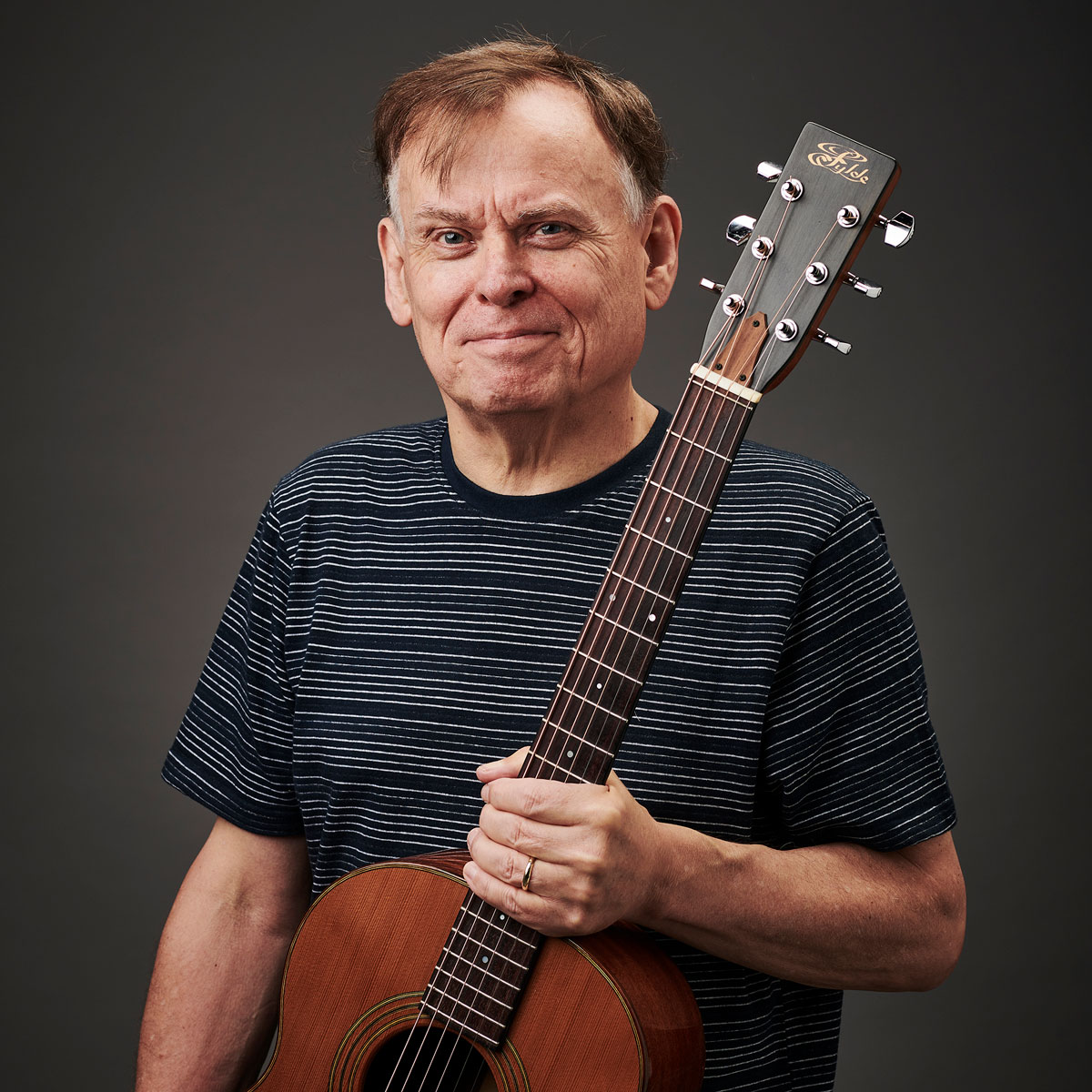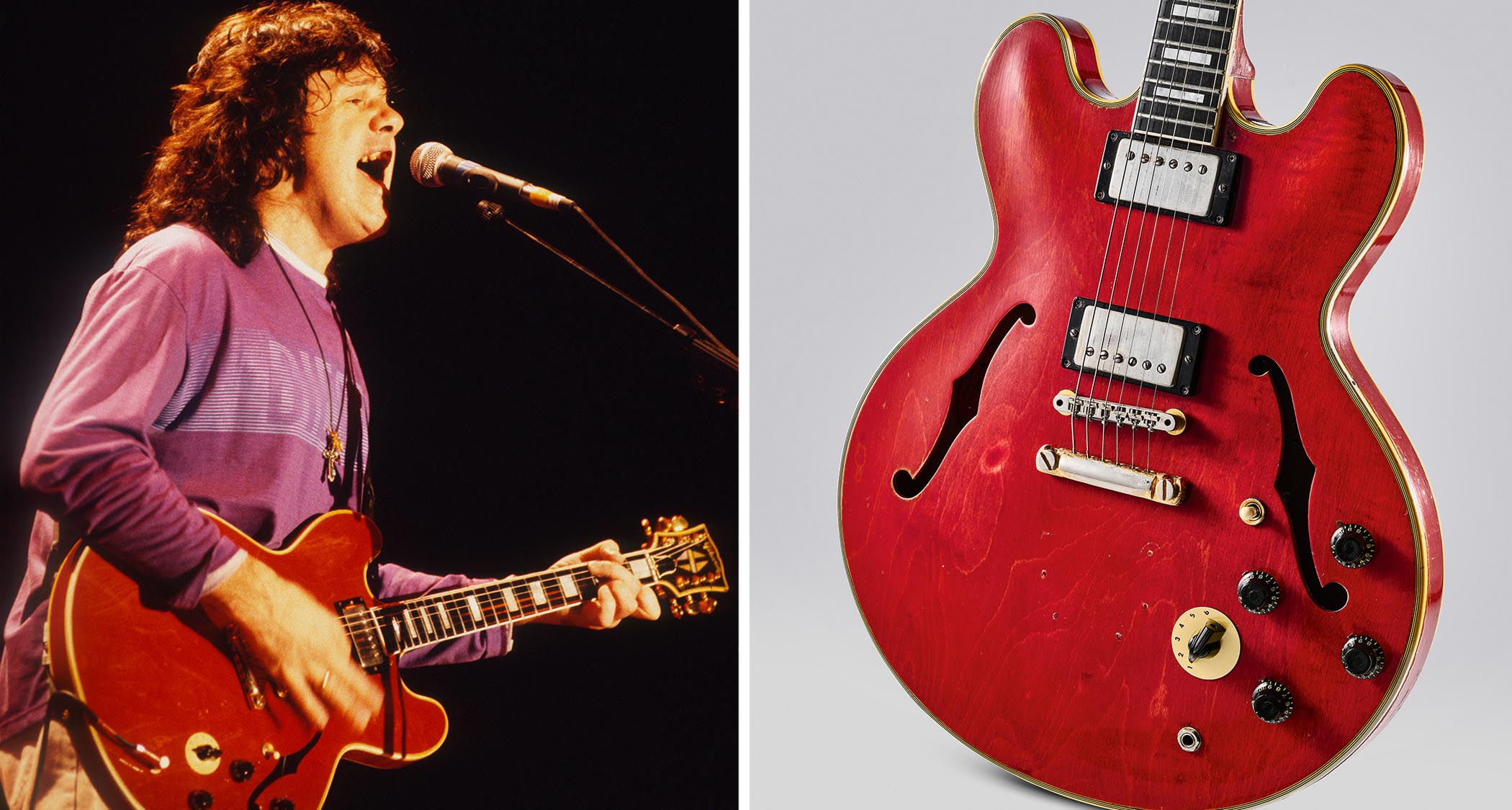“When I struggle with live sound, I think, ‘Oh God, I can play so much better when I’m just in a room and I can hear myself…’ But that’s when I dig in and try harder”: Tommy Emmanuel and Molly Tuttle give a tone, technique and touring masterclass
It’s not often that you find two of the world’s greatest acoustic players on tour together, and we couldn’t resist the opportunity to invite them for an interview and video masterclass…
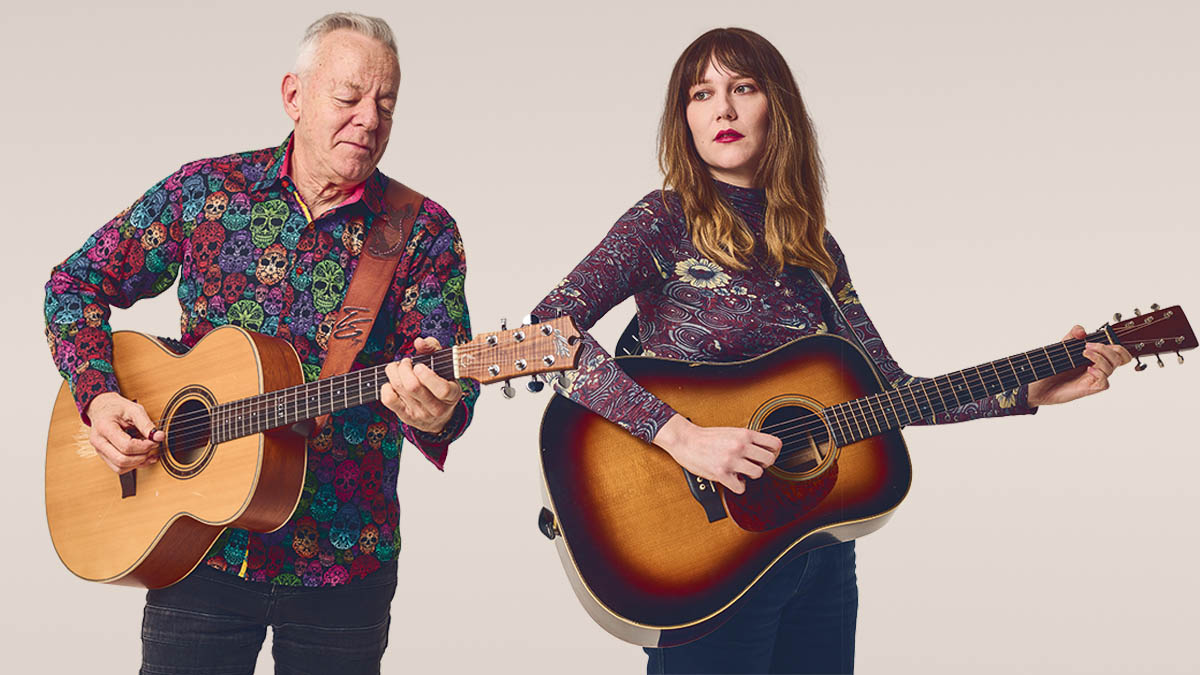
Watching Tommy Emmanuel play his music live on stage is memorable in itself, but when it’s combined with bluegrass singer-songwriter Molly Tuttle as the support act, it becomes an experience not to be missed.
Tommy’s presence on the scene has been one of the wonders of the acoustic world for many years. And while Molly is a relatively new name on the circuit, she is beginning to garner the international fame she richly deserves.
In 2023, she won a Grammy with her band, Golden Highway, for the Best Bluegrass Album with Crooked Tree, and this was followed by the gong in the same category at this year’s ceremony for City Of Gold.
Both Tommy and Molly are fiery performers in their own right, so when their talents are combined – as witnessed on their recent UK tour – the result is a formidable tour de force of acoustic guitar virtuosity.
When the pair were set to appear in our home town of Bath, UK, at a venue right next door to the Guitarist offices, we sent an invitation to meet for a catch-up and a truly remarkable video masterclass.
Tommy Emmanuel interview
When we spoke to Tommy about his upcoming work we couldn’t help but notice his timetable is as packed as ever. However, keeping himself busy is precisely what fuels his creative fires, whether in the studio or out on the road.
Your professional life seems as hectic as it ever was. How are you coping with the work schedule these days?
All the latest guitar news, interviews, lessons, reviews, deals and more, direct to your inbox!
“Well, this year there’s three periods where I have a little time off between tours because I have a new live album coming out that I recorded at the Sydney Opera House. I did two shows, recorded them both and filmed them, and so I have that to finish mixing and mastering. I have a bunch of new songs and I want to get my next solo album done this year, ready to come out next year. So there’s a lot of stuff in the works.
Playing a show nearly every night is good for me – it makes me dig deeper and I get a momentum going
“The way my life is right now, it would wear most people out. But this is what I’ve always done, you know? I was looking at some of the schedules from 2001, and holy smoke! I was doing, like, 46 dates in a row and stuff like that. So I’m used to hard work, it’s what I love. And when I get going, that’s when my creativity seems to show up.
“I mean, playing a show nearly every night is good for me – it makes me dig deeper and I get a momentum going. Even just coming here today, and talking with you and shooting videos and playing, is so good for me because I get to talk about creative things and things that I love.”
You’ve said in the past that when you go into the studio you take a selection of guitars with you. How do you go about choosing which guitar is the best fit for any particular song?
“I just find the guitar that’s right for the song. I have a Larrivée C-10, which is a 12-fretter, and I use that in some songs where I’m looking for a certain texture or warmth. But then there are other songs where the little Maton 808, with the smaller body, works beautifully. Sometimes, I use the bigger-bodied Maton as well.
“I have a few voices; I have a Martin-sounding guitar, a 000-28 [style]. I don’t own a D-28, a dreadnought Martin, but I do have a couple of dreadnought-size guitars that were handmade and given to me ages ago; I just hung on to them, but I haven’t used them for recording. But most of the guitars I’ve collected over the years, I’ve given away, you know? I auction them off for my charities: Doctors Without Borders, Guitars 4 Vets and the Salvation Army.”
Do you enjoy recording?
“When I’m going to record in the studio I’m in heaven because, first of all, I’m playing acoustically on great microphones and we’ve spent time finding exactly the right choice of mics, the right placement, all that. And then I have headphones and I can hear everything so clearly.
“I very rarely do more than one or two takes of a song in the studio because I don’t like dropping in and fixing up and doing all that. I like playing the song and feeling the momentum of the song. So if I have to keep dropping in and fixing things, then I haven’t practised enough!
“I recorded the whole of Tommysongs, which is a double-album of 24 original songs, in two days: 24 songs, you know? I had just finished a tour and I planned it that way. I went straight into the studio the day after the last show and I was ready to fire. You’ve got to be prepared, you can’t waste time in the studio.
“I don’t have a studio at home. I don’t want one. Basically, I’m a writer who uses my iPhone as my writing tool. I just go on to Voice Memos and when I’m writing a song, I record it, then I listen back and see what it needs. When I get the song done, I’ll record what I call the ‘definitive demo’ of the song – this is how it goes – and then I move on to the next song.
“Then, when I’m ready to record, I want the best microphones, the best engineer and the best sound that I can possibly get. So I’d rather spend the money on a great, great studio and a great engineer, than spend a fortune decking out some studio and then trying to engineer it myself. I’m not an engineer, I’m a player. And I need to capture that.”
How long does it take you to practise a new song before you feel it’s ready to perform?
“For some songs, like Fuel, I wrote that on a train trip from Paris to Cologne, and I played it that night on the show because I felt it was all done. Other times I think a song is done and then I’ll play it again at another time and my instincts will say, ‘No, it’s not done yet. This needs something else.’
“There’s a song that’s coming on the new album called Scarlett’s World. That took me two weeks to finish because I wrote all this stuff and I put it in there and jammed it in. Then when I went back and listened to it, I went, ‘I’m trying to do too much…’ and my instincts were like, ‘Get rid of that and get rid of that…’ and so I narrowed it down to the meat and potatoes of the song. Tell the story and leave it: stop.”
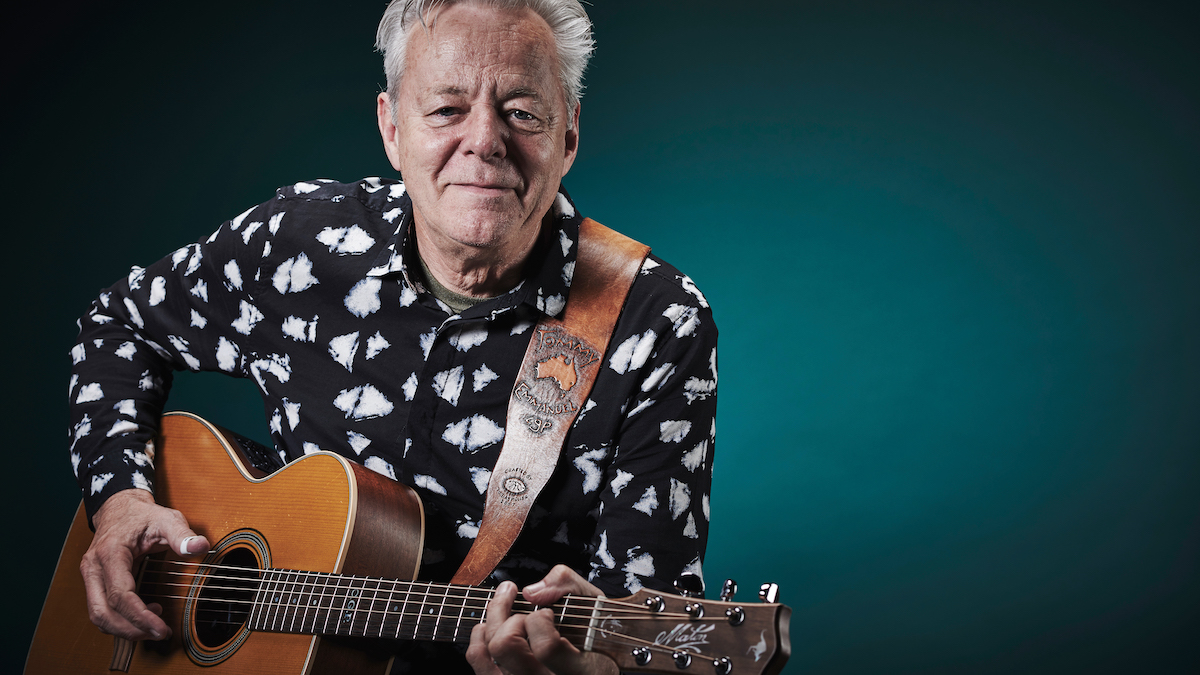
You’ve changed your live setup since we last spoke and you’re now using the Udo Roesner Da Capo acoustic amp. Tell us more…
“Yeah, the Da Capo 75. Basically, it’s to replace the [AER] Compact 60 that I used for so many years. The Compact 60 is still a great amp and it always will be, but when Udo brought that amp to me, we A/B’d them. I did the soundcheck using the Compact 60 and then plugged in Udo’s and the sound just opened up.
“If you have a look at some of my TikTok videos from last year, I have the Udo amp under a table and it’s barely on. I can hear the amp, but when you watch the video, you think it’s just a mic. That’s how good the amp is. You think it’s just a mic, right?”
Do you still try to keep your live setup straightforward and simple?
“Absolutely, yeah. I have one pedal on stage and it’s a tuner that mutes, right? That’s it. So my signal is from the guitar into the tuner, tuner into the AER Pocket Tool preamp, which is basically just the AER technology and sound – so that’s a big, fat clean signal.
I get the mics that sound really sweet and woody, and then I have a Royer ribbon mic sitting about a foot behind the mics in front of me and it just adds grit to the whole picture
“Then I come out of that and go into the Udo amp and I come out of the amp into the PA. So it’s two direct signals, one direct from the Pocket Tool to the PA, then direct from the amp to the PA.
“[Front-of-house engineer] Steve [Law] puts them at a certain level so it all gels together. So from the direct signal, you’re getting all the rich bottom-end from the bass of the guitar, and the high-end and all that. Then, from the amp, you’re getting that woolly, kind of gritty midrange. You add the two together and they become one sound.
“I do the same kind of thing with microphones when I’m recording. I get the mics that sound really sweet and woody, and then I have a Royer ribbon mic sitting about a foot behind the mics in front of me and it just adds grit to the whole picture – a certain grit that you can’t get with a normal microphone, you know?”
Travelling around, you’re at the mercy of different PAs of varying quality in the venues you play. How do you manage to maintain a good sound every night?
“How I cope with it is I have the best sound guy there is! He knows what I’m looking for; he knows what I need. When you’re playing through your own amp and your own preamp and you know your sound, you’re going to get a sound that inspires you.
“The only things I struggle with are, firstly, my own hearing because I wear hearing aids, right? My hearing was destroyed before I was born: I was born with yellow fever. So I’ve been wearing hearing aids for a long time. So there’s that, and then there’s modern technology.
“PAs are all flown now and they’re line array and so people on stage wouldn’t even know the PA was on. I’m used to feeling the size of my notes. So we use side fill for me, where we have a small PA equivalent 10ft from me on both sides [of the stage] pointing in my direction. It’s got bigness to the sound, but it’s not affecting the sound that Steve’s getting out the front.”
Is playing live still as exciting for you as it always was?
“Well, I hope I’m getting better at it! It’s a love-hate relationship because I love playing so much, but when I struggle with sound or something, then I think, ‘Oh God, I can play so much better when I’m just in a room and I can hear myself…’ But that’s the stuff that sharpens your sword; when the going gets tough, that’s when I dig in, that’s when I really try harder.
“And you’ve got to do that. The older I get, the more I depend on that part of me: ‘Okay, this is getting like a struggle, time to relax…’ and so I try to undo all my urgency because I know I can play better or whatever. I try to do something to defuse those emotions, so I can just constantly play and enjoy it.
“When you’re sitting out in the [audience], you have no idea what the player is going through. And a person like me, I’m on stage, I’m looking at you, I’m looking at my guitar and I’m listening to every detail. I’m listening to my timing, my tuning, the sound that I’m making, the feel that I’m playing with. I’m listening to everything on a really hyper level. But, at the same time, I want to be enjoying myself. That’s what it’s all about.”
Molly Tuttle interview
After the dust had settled at the Guitarist studios and both Tommy and Molly had motored off to their next tour date, we heard about the duo’s success at the Grammys in LA on 4 February where Molly picked up her second award in the Best Bluegrass Album category for City Of Gold.
Remarkably, she was up against both Willie Nelson and Billy Strings and described winning for a second year running as “surreal…” If you look at the video of her winning this year’s award you’ll see her sprinting to the stage to pick it up. If you wondered what the rush was all about, read on…
Winning the 2023 Grammy Award for Crooked Tree wasn’t exactly without incident, was it?
“It was amazing. I was up for Bluegrass Album and Best New Artist, and the Best New Artist thing was really unexpected. It was outside of the American Roots genre, which I definitely didn’t see happening, and it was a wonderful surprise. We got there and got through the red carpet and sat down in the auditorium and they announced that Crooked Tree won and it was surreal.”
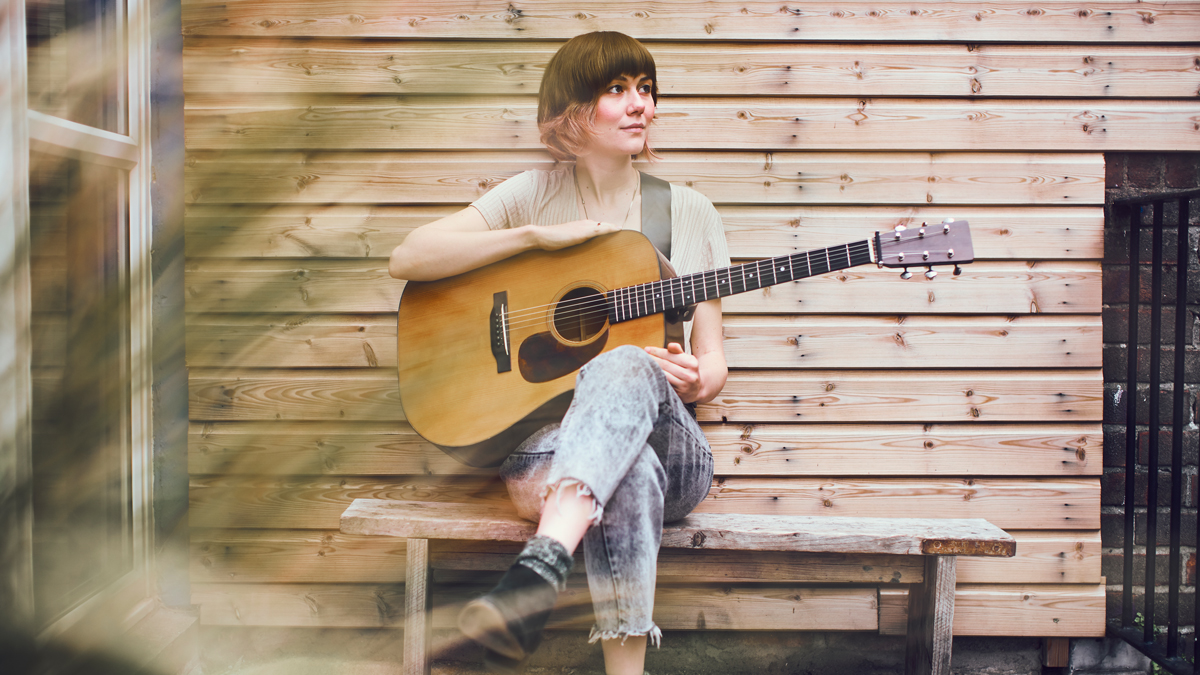
“I was towards the back of the place and I was running to the stage, but they didn’t see me. And when someone’s not there for the award, they just move right along to the next one. So they started announcing the next award and it was this moment like, ‘Oh, my God, I just won a Grammy!’ and, ‘Oh no, I don’t get to do my speech and thank all the people who helped to make the album…’
When I made Crooked Tree, it felt like I was going back to my roots
“It was pretty funny, looking back on it, but in the moment I was trying to balance feelings like: ‘Well, that is the coolest thing that’s ever happened’ and ‘Wait, what just happened? and ‘How did I not make it to the stage in time?’
“After that, I went through the press interviews and got to hold one of the Grammys they keep backstage but don’t have anyone’s name on them, but you have pictures taken with them. Just soaking in the whole show was amazing.”
Have you experienced any after-effects on your career, having won a Grammy?
“Yeah, totally. I mean, I’ve been performing and making records for a long time, but when I made Crooked Tree, it felt like I was going back to my roots. Coming out of the pandemic, I was feeling nostalgic for the music I grew up with, so I made a bluegrass album, put together a brand-new band, and it felt like the start of this new exciting path that I was on.
“Winning the Grammy solidified us as a band; it really boosted our profile, in a way. So many cool opportunities came from it. I think our first show of the year was playing on Jimmy Kimmel [Live!]. That was very cool, to get to do some TV stuff and publicity around winning that award.
“Since then, it’s just felt like so many things have happened over the last year that have been really exciting, like bucket-list moments for the band. And we made an album together and put it out last year. We’re just on this really fun ride right now.”
Where does a new song start for you – is it usually a melodic idea or does it come from a lyric?
“It usually starts with some sort of idea for what I want to write about. Maybe a lyric idea or sometimes I just talk to someone who I’m writing with for a while about what we’re wanting to say with the song. Then someone might start strumming a guitar, humming a melody.
“Sometimes you come up with a couple of words that lead you in a direction. But these days I like to have an idea of some topics I want to write about – what I want to say with my song – because that keeps it all focused and can even inform how the music sounds.”
Do you find that playing live and playing in the studio involves two completely different headspaces?
“Oh, yeah, totally. I think I really realised that on this last record, City Of Gold. It was the first time I had gone into the studio with my live touring band and I think we’re so used to playing together with an audience and feeding off the energy of the crowd. If you don’t play everything perfectly, it’s okay. It’s like this energy that you’re putting out there into the audience and they’re giving it back to you.
I’m definitely someone who just wants to go back and fine-tune everything as much as possible
“Playing with Tommy, he talks about showmanship a lot: ‘I just do it for the show.’ And, obviously, he’s such a virtuosic player but he’s also an amazing performer and extremely entertaining to watch. So you kind of get into that headspace.
“When you go into the studio, it’s just the sound of what you’re playing and singing and the songs you’ve written. So you have to think about it in a different way: ‘How do I get the best tone?’ ‘Am I perfectly in tune?’ ‘Am I playing everything as well executed as I can?’
“And you can also really obsess over stuff because you have the chance to go back and fix things as many times as you want, as long as you don’t run out of studio time. It can be hard to know, ‘When do I stop? When is it good?’ I’m definitely someone who just wants to go back and fine-tune everything as much as possible.
“Working [and co-producing] with Jerry Douglas on the last two records, he’s someone who’s more of the mind that you ‘get it in the moment’, and usually what you played when you were feeding off each other’s energy had the best vibe. You shouldn’t go back and try to redo everything and make it perfect, because [that way] it loses some of the soul.”
You’ve brought a special custom-made Pre-War guitar out on tour with you this time. Tell us more…
“I have two Pre-War guitars now. One is rosewood [back and sides], one’s mahogany – and I have my rosewood one with me here. It’s a Brazilian rosewood dreadnought-style guitar and the wood was actually gifted to me from someone who came to my show years ago. They gave the wood to the Pre-War guitar company and they made me the guitar. It was cool, I got to be in on the whole process of creating the guitar, making the neck the size I wanted.
Working with Jerry Douglas on the last two records, he’s someone who’s more of the mind that you ‘get it in the moment’, and usually what you played when you were feeding off each other’s energy had the best vibe
“The company bases its guitar designs on guitars from the 30s and a lot of them have these really thick necks. So the first Pre-War guitar I got had this really fat round neck and, for the one that I have here, I told them I wanted it a little thinner. I got to design the sunburst; I like sunburst guitars, which you don’t see too often in bluegrass, but I think they’re pretty.
“I got to visit while they were making the guitar and they said, ‘Do you want to write a little message on the inside of the guitar?’ and I ended up writing a quote from the song Standing On The Moon [by The Grateful Dead] that I cover a lot and I wrote: ‘A lovely view of heaven… but I’d rather be with you’, which is one of my favourite lyrics from that song. You can’t actually see it, it’s on the inside of the top so I don’t know if I’ll ever actually see the little message I wrote.”
What’s your live setup?
“I’m always tweaking things a little bit. I have a new pickup; I just last month got a Fishman Aura pickup and preamp that is brand-new. Before, I was using two different pickups from K&K [Sound] – a Double Helix and a Pure Mini – but there was some sort of issue with the interface, the way the two pickups were working together.
“I loved how they sounded, but there was some sort of humming thing that would happen sometimes and we didn’t know how to fix it. So I got a new pickup and I’m down to just one input now, which is good. Before, I was on a stereo system, which sometimes made it hard using other people’s gear – you know, sitting in with people. It was just a little bit more complicated.
“So now I have the Fishman, which has been good so far. I’m still getting used to it and working out the kinks and dialling it in. Sometimes I have effects pedals that I use – delay or tremolo – but I’m not a huge gearhead. I usually keep it fairly simple.”
Do you go straight into the PA from the guitar then?
“I go through my Aura preamp. I sent my guitar to [Fishman] and they sampled my guitar through different mics and so it has all these settings where I can go from mic to mic and it’s supposed to make it sound more natural.”
What lies in the immediate future for you?
“It’s busy. We’re starting to announce some dates for this year and I’m probably gonna go back into the studio at some point. Touring with my band, starting in April, is when we really are going to pick up. We have a couple of shows here and there for the first couple months of the year, but then we’re taking a little bit of a break as a band before hitting it hard again, starting in April.
“We did 99 shows last year and I’ll probably do close to that amount this year. I know I’ll be recording another album, obviously. I’m not sure when exactly. I’m kind of getting back into the writing process, but I would like to release some new music this year. So I think, whether it’s an album or a collection of songs, I’m gonna go back and record some new songs.”
- Molly Tuttle's Crooked Tree is out now via Nonesuch. Tommy Emmanuel's Accomplice 2 is out now via CGP Sounds.
With over 30 years’ experience writing for guitar magazines, including at one time occupying the role of editor for Guitarist and Guitar Techniques, David is also the best-selling author of a number of guitar books for Sanctuary Publishing, Music Sales, Mel Bay and Hal Leonard. As a player he has performed with blues sax legend Dick Heckstall-Smith, played rock ’n’ roll in Marty Wilde’s band, duetted with Martin Taylor and taken part in charity gigs backing Gary Moore, Bernie Marsden and Robbie McIntosh, among others. An avid composer of acoustic guitar instrumentals, he has released two acclaimed albums, Nocturnal and Arboretum.
